Today Current Affairs: 19th August 2021 for UPSC IAS exams, State PSC exams, SSC CGL, State SSC, RRB, Railways, Banking Exam & IBPS, etc
Table of Contents
Foreigners’ Tribunals:
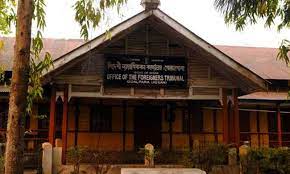
Assam government’s Political Department has issued a notification ordering the State police’s Border wing not to forward any case against Gurkhas to the Foreigners’ Tribunals under the Foreigners’ Act of 1946.
- The Border wing is tasked with identifying people of doubtful citizenship and serving them notices for a Foreigners’ Tribunal — a quasi-judicial establishment — to take over.
- According to the 2011 census, Assam has more than 5 lakh Gurkhas, most of whom came as members of armed forces under the British administration.
- About 22,000 Gurkhas were left out of the draft National Register of Citizens published on August 31, 2019.
- The cases of some 2,500 Gurkhas are pending in a few of the 100 Foreigners’ Tribunals in Assam. All such cases are to be withdrawn.
- A declared foreigner, or DF, is a person marked by Foreigners’ Tribunal (FT) for allegedly failing to prove their citizenship after the State police’s Border wing marks him or her as an illegal immigrant.
Foreigners tribunal:
- Foreigners’ Tribunals are quasi-judicial bodies established as per the Foreigners’ Tribunal Order, 1964 and the Foreigners’ Act, 1946.
- Composition: Advocates not below the age of 35 years of age with at least 7 years of practice (or) Retired Judicial Officers from the Assam Judicial Service (or) Retired IAS of ACS Officers (not below the rank of Secretary/Addl. Secretary) having experience in quasi-judicial works.
- The Ministry of Home Affairs (MHA) has amended the Foreigners (Tribunals) Order, 1964, and has empowered district magistrates in all States and Union Territories to set up tribunals (quasi-judicial bodies) to decide whether a person staying illegally in India is a foreigner or not.
- Earlier, the powers to constitute tribunals were vested only with the Centre.
India’s Water Crisis & Women:
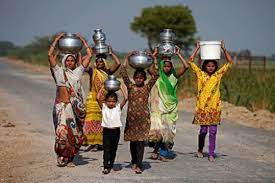
India is water-stressed due to changing weather patterns and repeated droughts. And the worst sufferers of this crisis are mostly women.
- Water scarcity in India is expected to worsen as the overall population is expected to increase to 1.6 billion by the year 2050.
- Although India has 16% of the world’s population, the country possesses only 4% of the world’s freshwater resources.
- In recent times, the water crisis in India has become very critical, affecting millions of people across India.
- As many as 256 of 700 districts in India have reported ‘critical’ or ‘overexploited’ groundwater levels according to the most recent Central Ground Water Board data (from 2017).
- Three-fourths of India’s rural families lack access to piped, drinkable water and must rely on unsafe sources.
- India has become the world’s largest extractor of groundwater, accounting for 25% of the total. Some 70% of our water sources are contaminated and our major rivers are dying because of pollution.
National Intellectual Property Awards 2020:

Minister of Commerce and Industry conferred the National Intellectual Property Awards 2020 to the winners at an event.
- Addressing the event , Shri Goyal said the key achievements of his Ministry includes
- Granting of 28,391 patents in 2020-21 as compared to 4,227 grants during 2013-14 (572% growth.
- Reduction in Time of patent examination from 72 months in Dec 2016 to 12-24 months in Dec 2020
- 2 lakh trademark registrations in 4 years (2016-2020) in comparison to 11 lakh during 75 years (1940-2015).
- India’s ranking improved in Global Innovation Index to 48th in 2020, (+33 ranks from 81st in 2015-16).
RoDTEP Scheme:
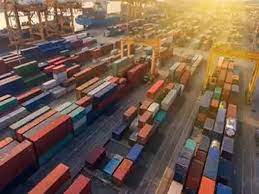
Centre has notified RoDTEP Scheme Guidelines and Rates (Remission of Duties and Taxes on Exported Products).
- The scheme for zero rating of exports will boost our exports & competitiveness in the global markets. The rates of RoDTEP will cover 8555 tariff lines.
- Scheme’s objective is to refund, currently un-refunded:
- Duties/ taxes/ levies, at the Central, State & local level, borne on the exported product, including prior stage cumulative indirect taxes on goods & services used in production of the exported product, and
- Such indirect Duties/ taxes/ levies in respect of distribution of exported products.
- Scheme is to be implemented by Customs through a simplified IT System. Rebate will be issued in the form of a transferable duty credit/ electronic scrip (e-scrip) which will be maintained in an electronic ledger by the Central Board of Indirect Taxes & Customs (CBIC).
Amrit Mahotsav Shri Shakti Innovation Challenge 2021:

On the occasion of Azadi ka Amrit Mahotsav, MyGov under the Ministry of Electronics and Information Technology, and UN Women jointly launched the Amrit Mahotsav Shri Shakti Innovation Challenge 2021, to encourage technology solutions developed by Women Entrepreneurs that facilitate Women’s Safety and Empowerment.
- The aim of the Challenge is ‘Nari Sashaktikaran’, that is to empower women to help them achieve their full potential.
- Hosted on the MyGov platform, the Amrit Mahotsav Shri Shakti Challenge 2021 will accept entries till September 17, 2021.
- 10 Nominees will be shortlisted and supported through a mentorship programme and each nominee will be awarded a grant of INR 1,00,000 to develop the Proof of Concept of their ideas.
- Following a rigorous screening process, five winners will be selected by a Jury in November 2021.
- The winners will be awarded INR 5,00,000 each to develop, market and implement their solutions.
- The Amrit Mahotsav Shri Shakti Challenge 2021 is being implemented under the Multi-Partner Trust Fund (COVID-19) Programme.
- The first Shri Shakti Challenge held in 2020 had received an overwhelming response, with a total of 1,265 entries and 10 Finalists comprising of women entrepreneurs, scientists, and change-makers from across the country, who had submitted innovative solutions to address the COVID-19 pandemic.
United Nations World Geospatial Information Congress (UNWGIC):
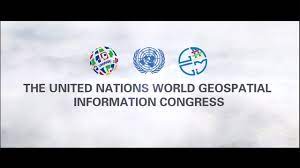
The Global Geospatial Information Community was sensitized about the second United Nations World Geospatial Information Congress (UNWGIC) to be organized by India in October 2022.
- The United Nation Committee of Experts on Global Geospatial Information Management (UN-GGIM) organizes the United Nations World Geospatial Information Congress (UNWGIC) every four years with the objectives of enhancing international collaboration among the Member States and relevant stakeholders in Geospatial information management and capacities.
- The first UNWGIC was organized by China in October 2018.
- The UNGGIM has entrusted the responsibility of organizing the second UNWGIC to India during October 2022. India will organize the event as a part of the “Azadi Ka Amrit Mahotsav (Celebration of 75 years of Indian Independence)”.
Student Entrepreneurship Program (SEP 3.0):
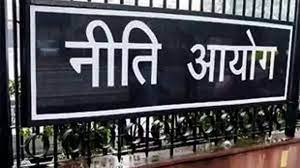
Atal Innovation Mission (AIM) NITI Aayog in collaboration with La Fondation Dassault Systemes in India launched the third series of the ‘Student Entrepreneurship Program’ (SEP 3.0) for the young innovators of Atal Tinkering Labs (ATL).
- The theme of SEP 3.0 is based on the ‘Made in 3D – Seed the Future Entrepreneurs Program’, conceptualized and rolled out in France by La Main à la Pate Foundation and La Fondation Dassault Systèmes Europe in 2017.
- As part of this program, a team from each school (6 students and a teacher) will be allocated seed funding towards creating their own start-up, design and prototype their innovation using 3D printing, prepare marketing campaign, define product pricing and create expansion strategy.
What is Student Entrepreneurship Program (SEP)?
- It is joint programme of Atal Innovation Mission (AIM) and La Fondation Dassault Systems in India.
- The theme of SEP 3.0 is based on the ‘Made in 3D – Seed the Future Entrepreneurs Program’.
- It is conceptualized and rolled out in France by La Main à la Pate Foundation and La Fondation Dassault Systèmes Europe in 2017.
Key Features of SEP 3.0
- A total of 50 teams from 26 states are selected for the SEP 3.0.
- Top 20 teams of ATL Marathon 2019, 10 teams selected by Dassault, 10 teams from Aspirational Districts and 10 teams from Jammu, Kashmir, Ladakh and North east regions are selected.
Oil Bonds:
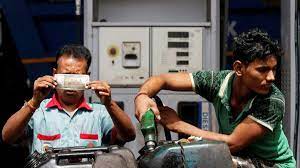
The Centre has argued that it cannot reduce taxes on petrol and diesel as it has to bear the burden of payments in lieu of oil bonds issued by the previous UPA government to subsidise fuel prices.
- Before fuel prices were deregulated, petrol and diesel as well as cooking gas and kerosene were sold at subsidised rates during UPA rule.
- Instead of paying direct subsidy to oil marketing companies from the Budget, the then government issued oil bonds totalling Rs 1.34 lakh crore to the state-fuel retailers in a bid to contain the fiscal deficit.
- Citing the need to repay interest and principal components on these bonds, the Centre has now argued that it needs higher excise duty to help its finances.
- The NDA government too has used a similar strategy to inject capital into state-owned banks and other institutions by issuing recapitalisation bonds worth Rs 3.1 lakh crore, which will come up for redemption between 2028 and 2035.
Financial Inclusion Index:

The Reserve Bank of India has created a composite Financial Inclusion Index (FI-Index) to capture the extent of financial inclusion across the country.
- The announcement regarding the creation of the Financial Inclusion Index was made in the first Bi-monthly Monetary Policy Statement for 2021-2022 on 17 April.
- The annual FI-Index for the period ending March 2021 is 53.9 against 43.4 for the period ending March 2017. The FI-Index will be published annually in July every year.
- The FI-Index has been conceptualised as a comprehensive index, incorporating details of banking, investments, insurance, postal as well as the pension sector, in consultation with government and respective sectoral regulators.
- It also captures information on the financial inclusion aspects in a single value ranging between 0-100, where 0 represents complete financial exclusion and 100 indicates full financial inclusion.
- The FI-Index comprises three broad parameters — Access (35%), Usage (45%), and Quality (20%), with each of these consisting of dimensions computed based on many indicators.
- The Index is also responsive to the ease of access, availability and the usage of services, and the quality of services, comprising all 97 indicators.
- A unique feature of the Index is the quality parameter, which captures the quality aspect of financial inclusion as reflected by the financial literacy, consumer protection, and inequalities and deficiencies in services.
- The FI-Index has been constructed without any ‘base year’, and as such it reflects cumulative efforts of all stakeholders over the years towards financial inclusion.




